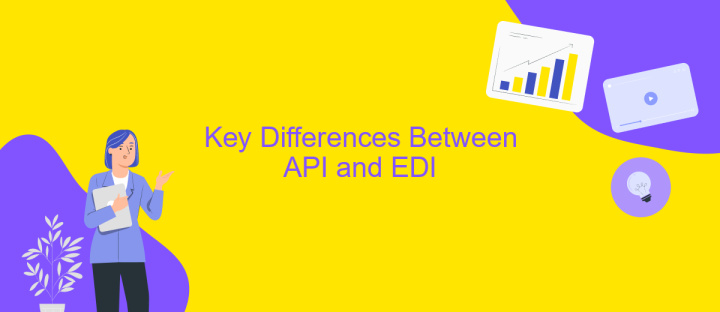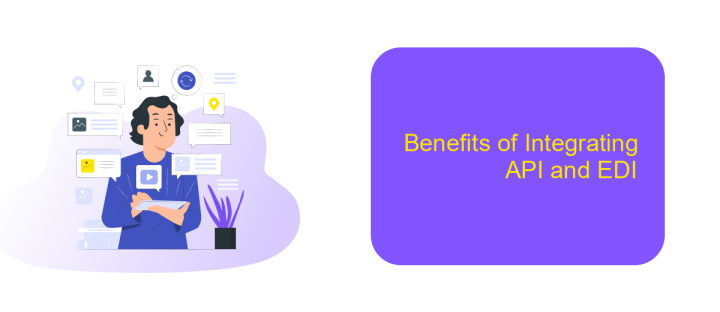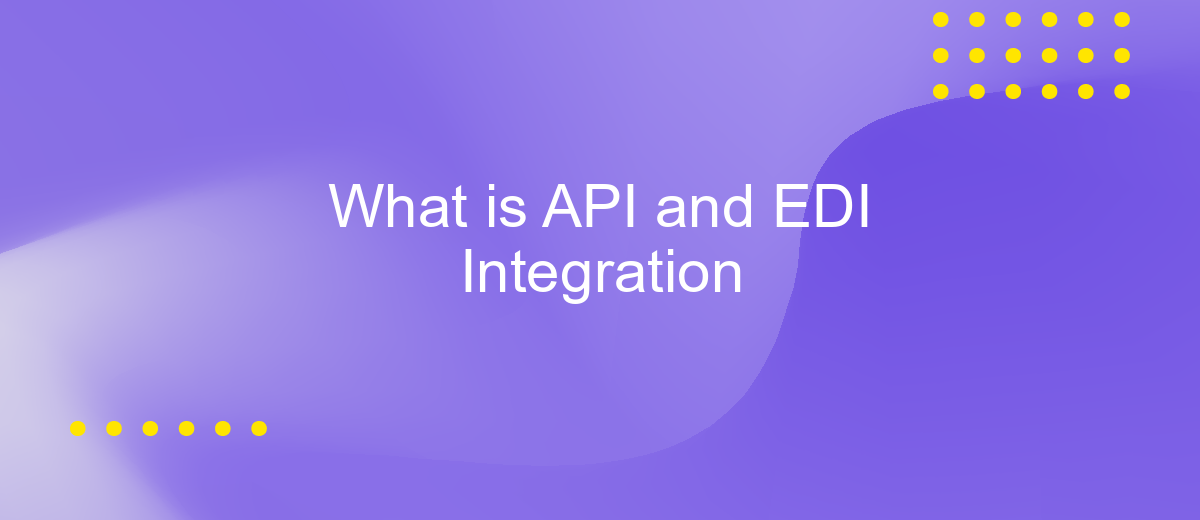What is API and EDI Integration
In today's interconnected digital landscape, efficient data exchange is crucial for business success. API (Application Programming Interface) and EDI (Electronic Data Interchange) integration are two powerful tools that enable seamless communication between diverse systems. While APIs provide real-time data access and flexibility, EDI offers standardized, secure transactions. Understanding these integration methods can help businesses streamline operations, enhance collaboration, and drive growth in an increasingly competitive environment.
Understanding API Integration
API integration is a process that enables different software applications to communicate and share data with each other. This seamless interaction allows businesses to streamline operations, enhance efficiency, and improve user experiences. By connecting disparate systems, API integration facilitates real-time data exchange, ensuring that information is consistent and up-to-date across platforms. This capability is crucial for businesses looking to automate workflows and reduce manual intervention.
- Improved data accuracy and consistency.
- Enhanced operational efficiency through automation.
- Real-time data synchronization across systems.
- Scalability to meet growing business needs.
- Reduced operational costs and time savings.
Implementing API integration requires careful planning and execution. It involves selecting the right APIs, ensuring compatibility between systems, and maintaining robust security protocols. Businesses must also consider scalability and future-proofing to accommodate evolving technology landscapes. By prioritizing these aspects, organizations can harness the full potential of API integration, driving innovation and maintaining a competitive edge in the digital marketplace.
Exploring EDI Integration

EDI (Electronic Data Interchange) integration is a pivotal process that facilitates the seamless exchange of business documents between trading partners in a standardized electronic format. By automating transactions such as purchase orders, invoices, and shipping notices, EDI integration significantly reduces the need for manual data entry, minimizes errors, and accelerates business cycles. This integration streamlines communication, ensuring that data is transferred accurately and efficiently across disparate systems, thus enhancing operational efficiency and reducing costs.
Implementing EDI integration involves several steps, including selecting the right EDI solution, mapping data formats, and establishing secure communication protocols. Platforms like ApiX-Drive can simplify this process by offering a user-friendly interface to connect various applications without the need for extensive coding. By leveraging such tools, businesses can quickly set up and manage EDI integrations, ensuring that their systems are aligned with those of their partners. This not only boosts productivity but also ensures compliance with industry standards, ultimately fostering stronger and more reliable business relationships.
Key Differences Between API and EDI

API (Application Programming Interface) and EDI (Electronic Data Interchange) are both crucial for data exchange between systems, yet they operate differently. APIs are modern tools that facilitate real-time communication and are widely used in web and mobile applications. In contrast, EDI is a traditional method primarily used for batch processing in industries like logistics and manufacturing.
- Communication Speed: APIs enable real-time data exchange, while EDI typically processes data in batches.
- Flexibility: APIs offer more flexibility and adaptability to various formats, whereas EDI adheres to strict standards.
- Implementation Cost: Setting up APIs can be more cost-effective compared to the often expensive and complex EDI systems.
- Security: Both systems offer security, but APIs can leverage modern security protocols, while EDI relies on established, older methods.
- Use Cases: APIs are favored in dynamic environments, whereas EDI is preferred in stable, high-volume transactions.
While both API and EDI serve to connect systems and facilitate data exchange, their differences in speed, flexibility, cost, security, and use cases make them suitable for different business needs. Understanding these distinctions helps in choosing the right solution for your integration requirements.
Benefits of Integrating API and EDI

Integrating API and EDI offers a streamlined approach to data exchange, enhancing the efficiency of business operations. By combining these technologies, companies can automate and simplify the transfer of information between systems, reducing manual intervention and minimizing errors.
One of the key advantages is the real-time data access and exchange provided by APIs, which complements the structured data format and reliability of EDI. This integration facilitates seamless communication between different software applications, leading to improved decision-making and faster response times.
- Enhanced data accuracy and consistency across platforms
- Increased operational efficiency through automation
- Improved scalability and flexibility for growing businesses
- Cost savings by reducing manual data entry and errors
- Better compliance with industry standards and regulations
Ultimately, integrating API and EDI allows businesses to optimize their supply chain and business processes. This synergy not only boosts productivity but also enhances customer satisfaction by ensuring timely and accurate data exchange. As a result, companies can remain competitive in a rapidly evolving digital landscape.


Use Cases and Examples of API and EDI Integration
API and EDI integration can significantly enhance business efficiency by enabling seamless data exchange between different systems. For instance, in the retail sector, integrating APIs with EDI allows real-time inventory updates, ensuring accurate stock levels across all sales channels. This integration facilitates smooth order processing, reducing manual errors and improving customer satisfaction. In logistics, API and EDI integration streamline shipment tracking and delivery updates, providing transparency and timely information to both businesses and customers.
Services like ApiX-Drive simplify the integration process by offering a user-friendly platform to connect various applications without extensive coding knowledge. ApiX-Drive allows businesses to automate workflows, ensuring that data flows effortlessly between systems such as CRM, ERP, and e-commerce platforms. This not only saves time but also reduces operational costs by minimizing the need for manual data entry. By leveraging such integration tools, companies can focus on core activities while maintaining efficient and reliable data exchange across their operations.
FAQ
What is API integration?
What is EDI integration?
How do API and EDI integration differ?
What are the benefits of API and EDI integration?
How can businesses implement API and EDI integration?
Time is the most valuable resource for business today. Almost half of it is wasted on routine tasks. Your employees are constantly forced to perform monotonous tasks that are difficult to classify as important and specialized. You can leave everything as it is by hiring additional employees, or you can automate most of the business processes using the ApiX-Drive online connector to get rid of unnecessary time and money expenses once and for all. The choice is yours!

